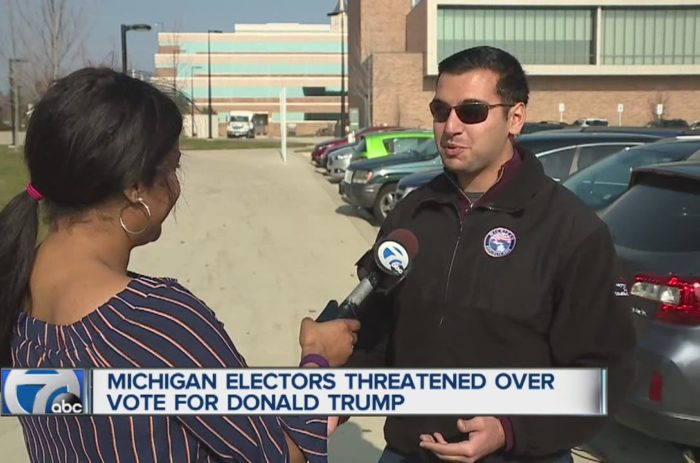The following is an excerpt from OpinionJournal.com’s “Best of the Web” written by the editor, James Taranto.
Help Wanted
“Greenwich Police Searching for Grocery Store Burglars”–headline, Greenwich (Conn.) Time, Sept. 19
‘Artists’ as Servants of Power
Andrew Breitbart’s Big Hollywood is out today with new details on the National Endowment for the Arts scandal, including a full transcript and audio recording, as well as a CliffsNotes summary by John Nolte, of the notorious Aug. 10 conference call in which administration officials urged artists to help promote President Obama’s legislative agenda.
Formally, the call was led by Michael Skolnik, who is not a government employee. But Skolnik declares at the start of the call that he is acting on behalf of the administration:
I have been asked by folks in the White House and folks in the NEA about a month ago in a conversation that was had. We had the idea that I would help bring together the independent artists community around the country.
Several administration officials also participate in the call: Nell Abernathy of United We Serve, part of the Corp. for National and Community Service; Buffy Wicks of the White House Office of Public Engagement; and Yosi Sergant, then communications director for the NEA (he has been “reassigned” since the scandal broke).
The administration participants seem to realize that they are treading on shaky ethical and legal ground. When one artist asks Abernathy “what we can do to help on critical advocacy issues like health care reform, cap-and-trade policy,” she replies:
Yeah, I can address that a little bit, and the reason only a little bit is largely because in my role at a federal agency, I’m precluded from going too far down the specific steps what people can do to advocate. . . .
I could get that information to Michael [Skolnik] and he could get it out. We can’t sort–as a representative of the corporation, I’m not capable of giving you more guidance than just sending you to the right person.
Yet she is capable of participating in the call. What happened after the call ought to raise eyebrows too. As Nolte reports:
Sergant then turns the call over to Thomas Bates from “Rock the Vote,” who offers up an example of local environmental activism involving a garbage sculpture. Within days after this call Rock the Vote would launch a “health care design contest.”
A mere two days after the call a group of 21 art organizations endorsed health care reform.
Of those 21 organizations, “16 of the groups and affiliated organizations received nearly $2 million in grants from the National Endowment for the Arts in the 150 days before the conference call.”
The NEA Web site describes its mission as follows: “supporting excellence in the arts, both new and established; bringing the arts to all Americans; and providing leadership in arts education.” Organizing propaganda for the party in power is not mentioned, nor is financially rewarding politically friendly artists. A quote from the New York Times obituary of Irving Kristol seems especially prescient:
After marrying, Mr. Kristol followed his wife to Chicago, where she was doing graduate work and where he had what he called “my first real experience of America.” Drafted into the Army with a number of Midwesterners who were street-tough and often anti-Semitic, he found himself shedding his youthful radical optimism. “I can’t build socialism with these people,” he concluded. “They’ll probably take it over and make a racket out of it.”
This is not the first time the NEA has sparked controversy. Nearly two decades ago, during the George H.W. Bush administration, it was at the center over a battle over taste: The NEA had given grants to photographers who produced sexually explicit or religiously offensive work (Robert Mapplethorpe, Andres Serrano) and to “performance artists” who ranted and raved and took off their clothes (most memorably Karen Finley).
We covered that NEA battle as a young writer for a sparsely circulated, now-defunct newspaper. It was a classic culture-war skirmish, but it was not especially partisan. Indeed, it was a Democratic Congress that imposed restrictions on grants for indecent art, while the Republican-appointed NEA head, John Frohnmayer, took the side of the target artists. Indeed, in 1990 we attended a lecture in which Julianne Davis, general counsel to the Bush NEA, described religious-right critics of the endowment as “our enemies” and falsely ascribed extreme theological views to one of them.
It was obvious back then that much of the so-called arts community leaned left politically. At the time, Frohnmayer’s NEA notwithstanding, the administration in power did not, so that artists could pose as oppositional figures, speaking truth–or at least shouting obscenities–to power.
Now that their side is in power, however, that adversary attitude stands exposed as a sham. The so-called oppositional artists are only too willing to act as handmaidens of the powerful. We backhandedly salute the Obama administration for exposing this.
Meanwhile, as with Van Jones and Acorn, the mainstream media have had little to say about this scandal. The New York Times hasn’t even reported it at all. What we said about artists in the preceding paragraph applies to the so-called adversary press as well.
For more “Best of the Web” click here and look for the “Best of the Web Today” link in the middle column below “Today’s Columnists.



